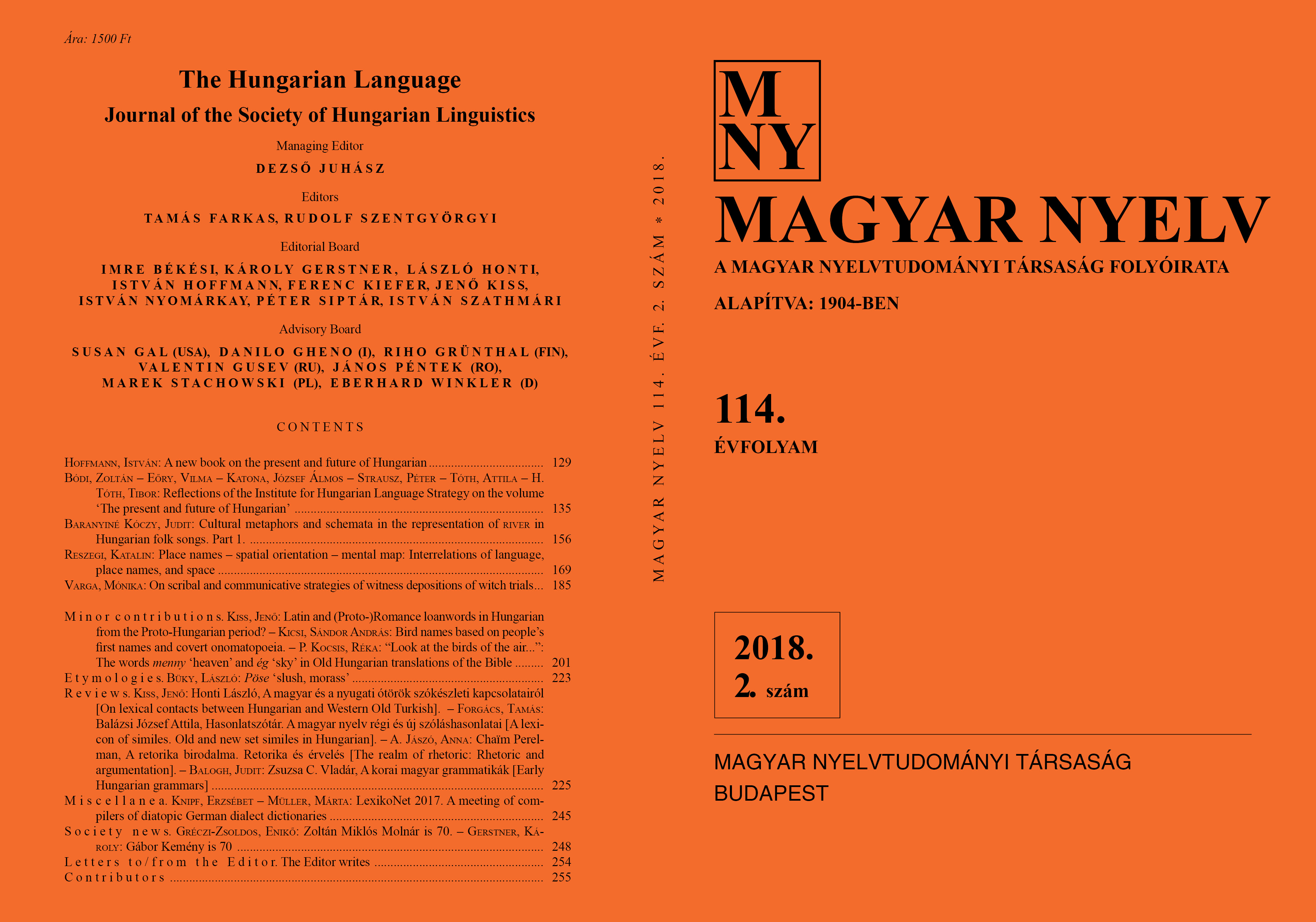A new book on the present and future of Hungarian
DOI:
https://doi.org/10.18349/MagyarNyelv.2018.2.129Keywords:
Hungarian language community, situation of Hungarian in Eastern Central Europe, language and language use, social embeddedness of language, Hungarian language strategyAbstract
A recently published volume entitled ‘The present and future of Hungarian’ represents a novel approach to the history of the recent past of this language, its current situation, and its foreseeable future. The novelty of the approach primarily comes from a consistently applied functionalist perspective, considering language to be an entity that is undetachable from language use and from the community of language users. It is also due to this perspective that the discussion is multi- and interdisciplinary in nature, involving a number of interrelated disciplines. The authors depict major events and characteristics of this language in their broadest possible social embeddedness and successfully pinpoint the areas that appear to be the most salient with respect to the future and competitiveness of Hungarian, as seen from the perspective of its present state.
Downloads
Published
Issue
Section
License
Copyright (c) 2024 István Hoffmann

This work is licensed under a Creative Commons Attribution-NonCommercial-NoDerivatives 4.0 International License.
Magyar Nyelv is a Diamond Open Access periodical. Documents can be freely downloaded and duplicated in an electronic format, and can be used unchanged and with due reference to the original source. Such use must not serve commercial purposes. In the case of any form of dissemination and use, Hungarian Copyright Act LXXVI/1999 and related laws are to be observed. The electronic version of the journal is subject to the regulations of CC BY-NC-ND (Creative Commons – Attribution-NonCommercial-NoDerivatives).
The journal permits its authors, at no cost and without any temporal limitation, to make pre-print copies of their manuscripts publicly available via email or in their own homepage or that of their institution, or in either closed or free-for-all repositories of their institutions/universities, or other non-profit websites, in the form accepted by the journal editor for publication and even containing amendments on the basis of reviewers’ comments. When the authors publicize their papers in this manner, they have to warn their readers that the manuscript at hand is not the final published version of the work. Once the paper has been published in a printed or online form, the authors are allowed (and advised) to use that (post-print) version for the above purposes. In that case, they have to indicate the exact location and other data of the journal publication. The authors retain the copyright of their papers; however, in the case of an occasional secondary publication, the bibliographical data of the first publication have to be included.



